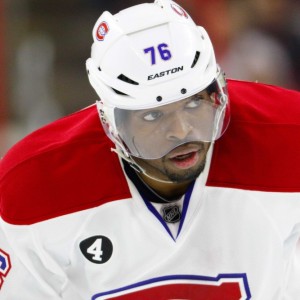Rasmus Ristolainen is set to become a restricted-free-agent this summer. Ristolainen elevated his game to the next level this season and has become the Sabres top defenseman. Buffalo has a decision to make how they want to approach contract negotiations this summer. The debate is whether the Sabres should push for a bridge contract or a long-term extension. Both sides of the argument has its positives and negatives.
Comparable Contracts
The 21-year-old had a career year for Buffalo this season. He recorded nine goals and 41 points in playing all 82 games, which ranked him 24th among all defenseman in the league in points. The 2013 first round pick led all defenders on the team in time on ice and was tenth in the NHL among defenders with 26:15 average time on ice. As the Sabres top defenseman he played in all situations, including quarterbacking the power play. Ristolainen put up 21 power play points on the season ranking him 16th among all defenders.

The Sabres and Ristolainen’s agent will look around the league to gauge what the Finnish defender’s value is as a starting point. The Toronto Maple Leafs just rewarded their young up and coming defenseman Morgan Reilly with a six-year 30 million dollar contract extension. Rielly’s career numbers and potential line up with that of Ristolainen’s. This contract would be a good starting point for the two sides to begin negotiations. Here are a few other similar contracts the Sabres and Ristolainen can use as comparable deals:
Olli Maatta- Six years 24.5 million, 4.083 million dollar cap hit (GP-165, G-16, A-41, PTS-57, P/GP-.35)
Morgan Rielly- Six years 30 million, 5 million dollar cap hit (GP-232, G-19, A-73, PTS-92, P/GP- .39)
John Klingberg- Seven years 29.750 million, 4.25 million dollar cap hit (GP-141, G-21, A-77, PTS-98, P/GP- .70)
Dougie Hamilton- Six years 34.5 million, 5.75 million dollar cap hit (GP-260, G-34, A-92, PTS-126, P/GP- .48)
For Ristolainen it would make sense for him to fall into the 5.25-5.75 million dollar cap hit. The main question however is how long should the term of the contract be?
The Bridge
One option for length of a new deal would be the “bridge” contract. For reference, a bridge contract is categorized as a contract in which the term of the deal is from one to three years, with two being the most common length. In some cases a bridge deal may also include an annual cap hit that is lower than expected for the player. A bridge deal affords the team the luxury of not making a long-term commitment to a young player. It also allows a team to have cap flexibility either in the present or down the road. Lastly and perhaps most importantly it enables a team to keep the player as a restricted-free-agent when the bridge deal expires.
In the Sabres case in regards to Ristolainen, I don’t believe a bridge contract would make sense. Buffalo has the cap space over the next few season to be big spenders. A two-year 9.5 million dollar contract for example, wouldn’t affect the current cap situation one way or the other compared to a long-term deal with a slightly higher cap hit.

The main issue with giving Ristolainen a bridge deal, a two-year term in particular, is that you’ll be swiping the credit card now, but you’re going to have to pay for it in two years. If Ristolainen stays on his current path of growth the Sabres may be paying him a cap hit in the neighborhood of seven plus million dollars then, as opposed to a five million dollar cap hit right now. If you need an example of this, look at the PK Subban contract. Subban signed a bridge deal for two years 5.75 million dollars, then when that contract expired he signed a massive eight-year 72 million dollar contract. If Montreal would have went with the long-term contract first they would have avoided a nine million dollar cap hit for eight years.
The other way the Sabres will pay in a two-year bridge deal is Ristolainen will be up for a new contract at the same time as Jack Eichel and Sam Reinhart. Signing all three of them at one time would make things very difficult in the summer of 2018 if that comes to fruition.
Long Term Deal
A long-term contract makes the most sense here for the Sabres and Ristolainen. For the Sabres it allows them to sign Ristolainen at an AAV that will be extremely favorable in a few years for the type of player he’ll be. For Ristolainen a long-term deal enables him to get a large contract now at fair value and then sign a contract for five to six years that’ll get him to unrestricted-free-agency. This allows him to cash in for a second time at the age of 26 or 27.
The trend in the league also looks to be heading in the direction of giving out long-term deal over the bridge contract as you can see by the examples I gave above. A six-year contract in the neighborhood of 33 million dollars makes the sense for both sides. Buffalo will get Ristolainen at a lower 5.5 million dollar cap hit over the next six seasons and it buys one year of unrestricted free agency.
We’ll see how this situation plays out with Ristolainen over the summer. It doesn’t seem like it should be a difficult contract to come to an agreement on with so many contracts handed out recently to comparable players.